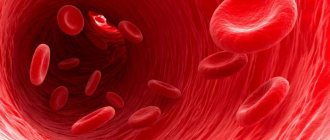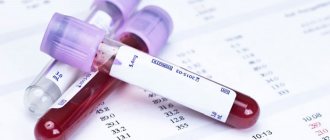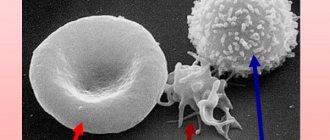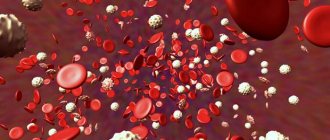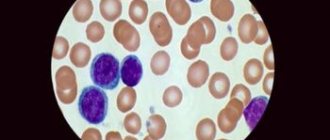What is glucose, its main functions
Glucose is a simple carbohydrate, due to which each cell receives the energy necessary for life. After entering the gastrointestinal tract, it is absorbed and sent into the bloodstream, through which it is further transported to all organs and tissues.
But not all glucose ingested from food is converted into energy. A small part of it is stored in most organs, but the largest amount is deposited in the liver in the form of glycogen. If necessary, it is able to break down again into glucose and replenish the lack of energy.
Like the liver, plants are also capable of storing glucose in the form of starch. That is why, after eating certain foods of plant origin, glucose in the blood of diabetics rises.
Glucose performs a number of functions in the body. The main ones include:
- maintaining the body’s performance at the proper level;
- energy substrate of the cell;
- fast saturation;
- maintaining metabolic processes;
- regenerative ability relative to muscle tissue;
- detoxification for poisoning.
Any deviation of blood sugar from the norm leads to disruption of the above mentioned functions.
Glycemic index in men
A positive glycemic index in male patients with a routine blood sugar test is the same as in women: 3.3-5.5 mmol/l. Glycohemoglobin test values are given below.
Table of sugar indicators in the form of glycated hemoglobin (HbA1c)
| Age (years) | Meaning (%) |
| Up to thirty | 4,5–5,5 |
| Thirty–fifty | 5,5–6,5 |
| Over fifty | 7,0 |
Men need to undergo laboratory diagnostics for sugar regularly. Especially after 40 years. High cholesterol in men and recommendations for reducing it.
Principle of blood glucose regulation
Glucose is the main supplier of energy for every cell in the body; it supports all metabolic mechanisms. To keep blood sugar levels within normal limits, beta cells of the pancreas produce a hormone - insulin, which can reduce glucose and accelerate the process of glycogen formation.
Insulin is responsible for the amount of glucose stored. As a result of disruption of the pancreas, insulin failure occurs, therefore, blood sugar rises above normal.
Explanation of acceptable values
A regular sugar test provides data instantly, but does not show the dynamics of changes in the concentration of the substance. There is a method for determining HbA1c. It makes it possible to quickly obtain this information.
Table of glucose levels in the form of glycated hemoglobin (HbA1c)
| Data | Decoding |
| less than 5.5% | There is no risk of developing diabetes |
| 5,5-6% | There is no hyperglycemia, but there is a high risk of its development (the diet needs to be reviewed) |
| 6,1-6,4% | There is no disease, but the likelihood of occurrence is high (specialist supervision is required) |
| 6.5% and above | diagnosis - preliminary diabetes (repeated laboratory diagnostics required) |
At 30 years old
The level of glycosylated hemoglobin may vary slightly depending on age. A normal value of 30 for HbA1c varies between 4-5%. After 30 years it may increase slightly.
After 40
Normal HbA1c readings at 40 years old are 5-7%. Exceeding the results will indicate pathological conditions.
At 50 years old
In adulthood, in women, the concentration of glycosylated hemoglobin in the blood is from 7%, but should not exceed 7.5%.
After 60
The normal blood sugar level for women aged 60 according to HbA1c is no more than 7.5%. If the indicator is exceeded after 60 years, the endocrinologist can make preliminary diagnoses:
- diabetes;
- Iron-deficiency anemia.
Additionally, auxiliary diagnostic measures are prescribed. They confirm or refute the diagnosis.
Main provoking factors, useful and harmful foods
Normal values in venous blood
Table of normal indicators by age.
| Age | Glucose norm, mmol/l |
| Newborns (1 day of life) | 2,22-3,33 |
| Newborns (from 2 to 28 days) | 2,78-4,44 |
| Children | 3,33-5,55 |
| Adults under 60 years old | 4,11-5,89 |
| Adults from 60 to 90 years old | 4,56-6,38 |
The normal blood sugar level for people over 90 years of age is 4.16-6.72 mmol/l
Does the level change with age?
The normal blood sugar level in women does not change with age (if all is well with health). With biological aging, the indicators increase somewhat, but this is not a good sign: it indicates pathological processes. If the sugar level is exceeded, measures are taken to normalize it.
Table
Age-related changes in glucose levels, fluctuations in the direction of its increase, may occur, but exceeding the mark of 6.2 mmol/l, if we are talking about a healthy woman, should not be.
Table of blood sugar norms in women by age
| Age (years) | How much sugar should be in the blood, the norm for women (mmol/l) |
| Up to forty | 3,3-5,5 |
| From forty to sixty | 3,3-5,9 |
| Over sixty | 3,3-6,2 |
When the blood sugar level does not jump over 6.2 mmol/l, this indicates the absence of diabetes, and not that everything is normal with health.
What is glucose in the analysis?
An increase or decrease in glucose indicates pathological processes. This means that there are problems with the metabolic process and hormonal levels. Sugar standards have an upper limit of 6.2 mmol/l (for sixty years). However, this is not desirable for a woman's good health.
Glucose is a transparent crystalline substance. It is the most important monosaccharide in blood fluid. Charges with energy necessary for cell activity. It is synthesized during the metabolism of liver glycogen and the absorption of carbohydrates. Glucose levels are controlled by insulin and glucagon. The second hormone helps the degeneration of glycogen into monosaccharide, increasing its concentration.
Glucose metabolism under the influence of insulin
Insulin transports glucose into tissues, improves the permeability of cell membranes for better penetration of the crystalline substance. The hormone lowers polysaccharide in the blood fluid and activates glycogen production. Glucose levels rise and fall due to metabolic problems:
- decrease in insulin receptors;
- loss of function to produce protein-peptide hormone;
- changes in the volume of hormones involved in glucose synthesis;
- problems with the digestive tract that interfere with the absorption of sugar.
The above leads to serious diseases. Therefore, you need to know what the sugar norm is, and if there is the slightest change in it, go to the clinic for diagnostics.
Tests to determine glucose concentration
To determine blood glucose levels, the following diagnostic methods are available:
Blood on sugar (glucose)
The analysis requires whole blood from a finger prick. Usually the study is carried out on an empty stomach, with the exception of a glucose tolerance test. Most often, glucose levels are determined using the glucose oxidase method. Also, glucometers can sometimes be used for express diagnostics in emergency conditions.
The blood sugar levels are the same for women and men. Glycemic values should not exceed 3.3 - 5.5 mmol/l (in capillary blood).
Glycated hemoglobin (HbA1c)
This analysis does not require special preparation and can most accurately indicate fluctuations in blood glucose levels over the past three months. More often, this type of examination is prescribed to monitor the dynamics of diabetes mellitus or identify a predisposition to the disease (prediabetes).
The norm of glycated hemoglobin is from 4% to 6% .
More detailed information about the analysis for HbA1c at the link: https://sdiabetom.ru/laboratornye-analizy/glikirovannyj-gemoglobin.html
Blood chemistry
Using this study, the concentration of glucose in venous blood plasma is determined. Blood is drawn on an empty stomach. Often patients do not know this nuance, which leads to diagnostic errors. Patients are allowed to drink plain water. It is also recommended to reduce the risk of stressful situations and delay playing sports before taking the test.
The blood sugar level from a vein (in plasma) will differ by 10-11%, reference values should be in the range of 4.0-6.1 mmol/l.
Blood fructosamine
Fructosamine is a substance formed as a result of the interaction of blood proteins and glucose.
Based on its concentration, one can judge the intensity of the breakdown of carbohydrates over the last three weeks. Blood is taken for fructosamine analysis from a vein on an empty stomach. Reference values (normal) – 205-285 µmol/l
Glucose tolerance test (GTT)
In common parlance, “sugar with a load” is used to diagnose prediabetes (impaired carbohydrate tolerance). Another test is prescribed for pregnant women to diagnose gestational diabetes. Its essence lies in the fact that the patient's blood is drawn two, and sometimes three times.
The first sample is taken on an empty stomach, then 75-100 grams of dry glucose are stirred in the patient’s water (depending on the patient’s body weight), and after 2 hours the test is taken again.
Normally, the sugar concentration after exercise should not exceed 7.8 mmol/l. Otherwise, the doctor will refer the patient for re-examination or an HbA1c test.
Sometimes endocrinologists say that it is correct to carry out GTT not 2 hours after a glucose load, but every 30 minutes for 2 hours.
C-peptide
The substance that results from the breakdown of proinsulin is called c-peptide. Proinsulin is a precursor to insulin. It breaks down into 2 components - insulin and C-peptide in a ratio of 5:1.
The amount of C-peptide can indirectly judge the condition of the pancreas. The study is prescribed for the differential diagnosis of type 1 and type 2 diabetes or suspected insulinoma.
The norm of c-peptide is 0.9-7.10 ng/ml
How to determine blood glucose levels?
The following symptoms may be indications for prescribing blood glucose measurements:
- causeless fatigue;
- decreased ability to work;
- trembling in the body;
- increased sweating or dry skin;
- anxiety attacks;
- constant hunger;
- dry mouth;
- strong thirst;
- frequent urination;
- drowsiness;
- blurred vision;
- tendency to purulent skin rashes;
- long-lasting wounds.
To determine blood glucose levels, the following types of studies are used:
- blood test for glucose (blood biochemistry);
- an analysis that determines the concentration of fructosamine in venous blood;
- glucose tolerance test.
- determination of the level of glycosylated hemoglobin.
Using a biochemical analysis, you can determine the level of glucose in the blood, which normally ranges from 3.3 to 5.5 mmol/l. This method is used as a preventive study.
The concentration of fructosamine in the blood allows you to estimate the level of glucose in the blood during the last three weeks before blood sampling. The method is indicated for monitoring the treatment of diabetes mellitus.
The glucose tolerance test determines the level of glucose in the blood serum, normally on an empty stomach and after a sugar load. First, the patient donates blood on an empty stomach, then drinks a solution of glucose or sugar and donates blood again two hours later. This method is used in the diagnosis of hidden disorders of carbohydrate metabolism.
In order for the results of biochemistry to be as accurate as possible, you need to properly prepare for the study. To do this, you must follow the following rules:
- Donate blood in the morning strictly on an empty stomach. The last meal should be no later than eight hours before blood sampling;
- before the study, you can drink only pure still water without sugar;
- do not drink alcohol two days before blood sampling;
- two days before the analysis, limit physical and mental stress;
- two days before the test, eliminate stress;
- for two days before taking the test, you cannot visit the sauna, do massage, X-ray examinations or physiotherapeutic procedures;
- two hours before blood collection you should not smoke;
- If you are constantly taking any medications, you should inform the doctor who ordered the test, as they may affect the biochemistry result. If possible, such drugs are temporarily discontinued.
To carry out the express method (using a glucometer), blood is taken from a finger. The test result will be ready in one to two minutes. Measuring blood sugar levels with a glucometer is often carried out in diabetic patients as a daily monitoring measure. Patients determine their sugar levels independently.
Other methods determine blood sugar from a vein. The test results are issued the next day.
How often should a healthy person and a diabetic check their sugar?
The frequency of testing depends on your general health or predisposition to diabetes. Individuals with diabetes I often need to test their glucose up to five times a day, while diabetes II requires testing only once a day and sometimes once every two days.
For healthy people, it is necessary to undergo this type of examination once a year, and for people over 40 years old, due to concomitant pathologies and for the purpose of prevention, it is advisable to do this once every six months.
Causes of increased glucose levels and symptoms of hyperglycemia
Hyperglycemia can develop for various reasons, which can be divided into two large groups - external and internal. The etiology of this pathology in women is somewhat different from the causes and conditions that provoke these disorders in men.
New information: Why does blood sugar rise in type 2 diabetics and in healthy people?
Most often, the appearance of hyperglycemia is associated with the development of type 1 or type 2 diabetes. It is these pathologies that a person remembers when he learns about an increase in carbohydrate levels, but these diseases are not the only reason.
Increased concentration is caused by nervous tension associated with exposure to constant stressful situations.
In addition, the reasons for an increase in the amount of glucose may be:
- Addiction to foods containing large amounts of simple carbohydrates.
- The period of bearing a child.
- Development of thyroid dysfunction.
- The occurrence of hormonal imbalance.
- The appearance of pathologies in the functioning of the gastrointestinal tract.
- Long-term use of hormonal oral contraceptives.
- Development of obesity.
- Presence of premenstrual syndrome.
When identifying hyperglycemia, it is necessary first of all to identify the cause of the increase in the indicator, this is due to the fact that the method of implementation depends on the etiology. During the examination, it is necessary to exclude or confirm the endocrine cause of the increase.
Once the diagnosis of diabetes is confirmed, the doctor prescribes medications that reduce the level of hyperglycemia.
The drug Maninil is most often used to treat non-insulin-dependent diabetes. Insulin injections are used to correct levels in the presence of an insulin-dependent form of pathology.
After the age of 40, regardless of the cause of the pathology, the doctor recommends:
- normalize the drinking regime;
- adhere to the rules of proper and healthy nutrition, excluding fried, fatty and sweet foods from the diet;
- moderate physical activity, if there are no contraindications for this;
In addition, you should visit a psychologist in order to normalize your mental state.
Symptoms of changes in glucose levels
Glucose can either rise sharply when there is insufficient amount of insulin administered or when there is an error in the diet (this condition is called hyperglycemia), or fall when there is an overdose of insulin or glucose-lowering drugs (hypoglycemia). Therefore, it is so important to choose a good specialist who will explain all the nuances of your treatment.
Let's consider each state separately.
Hypoglycemia
The state of hypoglycemia develops when the blood sugar concentration is less than 3.3 mmol/l. Glucose is a supplier of energy for the body; brain cells react especially acutely to a lack of glucose, hence one can guess the symptoms of such a pathological condition.
There are plenty of reasons to lower your sugar levels, but the most common are:
- insulin overdose;
- doing strenuous sports;
- abuse of alcoholic beverages and psychotropic substances;
- lack of one of the main meals.
The clinical picture of hypoglycemia develops quite quickly. If the patient experiences the following symptoms, he should immediately inform his relative or any passerby:
- sudden dizziness;
- severe headache;
- cold clammy sweat;
- unmotivated weakness;
- darkening of the eyes;
- confusion;
- strong feeling of hunger.
It is worth noting that patients with diabetes get used to this condition over time and do not always soberly assess their overall well-being. Therefore, it is necessary to systematically measure blood glucose levels using a glucometer.
It is also recommended that all diabetics carry something sweet with them in order to temporarily relieve the lack of glucose and prevent the development of an acute emergency coma.
Hyperglycemia
The diagnostic criterion according to the latest WHO (World Health Organization) recommendations is considered to be a sugar level reaching 7.8 mmol/l or higher on an empty stomach and 11 mmol/l 2 hours after eating.
If this condition is not stopped, over time the body adapts to the excess sugar, and the symptoms are muffled. Due to hyperglycemia, various complications of diabetes mellitus develop.
A large amount of glucose in the bloodstream can lead to the development of an emergency condition - hyperglycemic coma. To prevent the development of this condition, you need to be aware of factors that can increase blood sugar. These include:
- incorrectly reduced insulin dosage;
- inattentive use of the drug with missing one of the doses;
- eating carbohydrate foods in large quantities;
- stressful situations;
- cold or any infection;
- systematic consumption of alcoholic beverages.
To understand when to call an ambulance, you need to know the signs of developing or ongoing hyperglycemia. The main ones:
- increased feeling of thirst;
- frequent urination;
- severe pain in the temples;
- increased fatigue;
- taste of sour apples in the mouth;
- visual impairment.
Hyperglycemic coma often ends in death; it is for this reason that it is important to be careful in the treatment of diabetes mellitus.
How much should pregnant women have?
Blood sugar levels in pregnant women sometimes exceed acceptable levels. The prenatal period is a predisposing factor to the development of gestational diabetes. After labor, it can develop into type II disease. The likelihood of this increases in patients:
- with a genetic predisposition to hyperglycemia;
- during pregnancy after thirty years;
- with obesity;
- whose previous pregnancy did not proceed correctly;
- who previously had a baby weighing more than 4.5 kg with a height of 55-60 cm.
Blood sugar levels increase in pregnant women because... the amount of aminocarboxylic acids decreases, and the concentration of ketones increases. The level of protein-peptide hormone changes towards the end of the 2nd and 3rd trimester.
At the end of the second trimester, an hour-long oral sugar test is prescribed. Normal value: 7.8 mmol/l. If, after taking 50 g of glucose, its amount exceeds this mark, perform a 3-hour test with 100 g of the substance. The formation of diabetes mellitus is indicated by the following results:
- after an hour, the glucose level is more than 10.5 mmol/l;
- after a couple of hours more than 9.2;
- after three hours above 8.
A woman expecting a baby should closely monitor her health and control the amount of glucose in her blood.
Why is high blood sugar bad?
Aging is considered a circumstance that significantly increases the likelihood of diabetes mellitus. In fact, even after 45 years of age, the level often exceeds the permissible blood sugar level. For people over 65 years of age, the likelihood of experiencing high glucose levels increases.
Blood sugar levels
Sugar is formed in the human intestines after eating carbohydrate foods. The name sugar is not entirely correct; in fact, a product of the breakdown of carbohydrates, glucose, is formed inside the intestines. It enters the blood and spreads through cells and tissues.
Glucose is the main source of energy. With further breakdown inside cells, it releases energy that cells need for life. The body spends it on movement, tone, and thinking.
High blood sugar is the cause of several pathological processes:
- The blood thickens. Thick viscous liquid has insufficient fluidity, so the speed of blood flow is disrupted. As a result, thrombosis appears, and blood clots (thrombi) form in small vessels (capillaries).
- Sugar in the blood in diabetes hardens blood vessels. They lose elasticity and become brittle. When blood clots form, the walls of blood vessels can burst and cause internal bleeding.
- High blood sugar levels disrupt the blood supply to all organs. At the same time, the cells do not receive enough nutrition and accumulate toxic waste from their own vital activity. Inflammations form, wounds heal poorly, vital human organs degrade and are destroyed.
- Chronic lack of nutrition and oxygen disrupts the normal functioning of brain cells.
- Forms diseases of the cardiovascular system.
- High blood sugar interferes with kidney function.
When is it necessary to be examined?
The male body produces several hormones responsible for metabolism.
- Somatotropin is an insulin antagonist and increases blood sugar.
- Adrenaline is a substance that is synthesized by the adrenal glands and increases blood sugar.
- Dexamethasone and cortisol are glucocorticosteroid hormones involved in endocrine processes. They are responsible for carbohydrate levels and glucose production in the liver.
Sugar levels depend on each of these substances, so if blood glucose is high, it is recommended to also determine the amount of these hormones.
As men age, they may experience metabolic problems and develop diabetes. In order to notice violations in time, every man after 30 years of age must be tested once a year.
If a man begins to notice signs of diabetes, he must immediately contact his local physician for a medical examination.
Signs of high blood sugar
- thirst;
- frequent urination;
- constant feeling of hunger;
- headache;
- nausea and vomiting;
- weakness and malaise;
- weight loss;
- decreased immunity;
- long-term non-healing wounds (cuts, calluses, cracks);
- skin itching.
If a man is severely obese, then it is especially important for him to check his blood sugar levels. Excess weight can trigger insulin resistance - a condition in which organs and tissues stop sensing insulin, which is why glucose is not processed into energy, but remains in the blood.
Laboratory blood test for sugar
A blood sugar test will confirm or deny the presence of a health problem.
A blood sugar test in the laboratory will help refute the possibility of developing pathologies and diabetes. The test is taken on an empty stomach. It is first recommended to avoid physical and emotional stress, overeating, and drinking alcohol. As a rule, blood is taken from a finger, but if the patient is in a hospital, blood can also be taken from a vein. But the normal limit may be slightly higher.
If the limit limit is violated, then you should definitely consult a doctor for more extensive and detailed tests. If there is concern about the development of diabetes mellitus, the analysis is carried out several days in a row. Fasting tests are needed to determine what sugar level is in the case when food has not been consumed for 8 hours before the test. If we talk about the rapid test, it is done at any time of the day without restrictions. Such an analysis is needed to understand what blood sugar is normal for a particular lifestyle. A large difference in results indicates disorders in the body.
Table of blood sugar norms for women by age
The blood sugar level plays an important role in the general condition of a woman, her well-being, and the normal functioning of internal organs. Glucose enters the body with food, is digested, and absorbed. Over the course of several hours, it penetrates the cells.
If a woman's insulin synthesis is impaired, it is impossible to remove glucose from the cells and blood. Because of this, sugar accumulates in large quantities, and over time its concentration significantly exceeds the norm. Diabetics with elevated sugar levels may experience many diseases.
There are established limits for acceptable sugar levels. Below is a table indicating the norms for sugar content in capillary (taken from a finger) blood depending on the woman’s age.
| Age | Amount, mmol/l |
| Up to 14 years old | 3,3-5,6 |
| Up to 60 years old | 4,1-5,9 |
| Up to 80 years old | 4,6-6,4 |
| From 90 years old | Up to 6.7 |
In women over 40 years of age, certain deviations from the norm associated with hormonal changes and menopause are acceptable. In nursing mothers and pregnant women under 30 years of age and older, minor deviations are also natural.
Normal blood glucose levels in women are on average the same as in men. However, there are some reasons to consider that may affect the values. Factors include physiological state, body constitution, nutritional habits and age.
The normal blood sugar level in women when studying capillary blood (from a finger) is considered to be average values from 3.3 to 5.6 mmol/l, when studying venous blood - from 3.5 to 6.1 mmol/l.
The glucose level mentioned above is observed in women on an empty stomach. After eating, glucose increases. So, 60 minutes after eating, the normal amount of sugar is up to 9 mmol/l. Do you know what your blood sugar should be after eating after 2 hours? After such a period of time, the values are already beginning to decrease and are approaching the norm - from 4 to 8 mmol/l.
The normal blood test with glucose load can reach 7.9 mmol/l. In this case, the woman drinks half a glass of water mixed with glucose on an empty stomach. Blood sampling is carried out 2 hours after the exercise.
It should also be noted that the values of sugar norms depend on the constitutional type:
- In women of the normosthenic and hyposthenic type (that is, in thin women and girls with normal parameters), the levels range from 3.2 to 4 mmol/l;
- Hypersthenics (overweight women) have higher sugar levels, from 4.9 to 5.5 mmol/l.
The younger the girl, the less glucose she has in her blood. Thus, in newborns the norm is considered to be from 2.8 to 4.4, and in girls over 1 year old and in adult women the values range from 3 to 5.5. You will learn more about blood sugar levels in children in this article.
The sugar intake for women and men is basically the same, but there are differences.
The result will depend on some parameters:
- The test was taken on an empty stomach or after eating
- Sugar levels change with age; after 60 years, the level may increase in women and men
If a person eats normally, leads an active lifestyle, does not abuse alcohol, is not a drug addict, and the analysis shows elevated glucose levels, then the patient can be suspected of developing diabetes mellitus.
| Sugar norm | ||
| hypoglycemia | norm is less than 3.3 mmol/l | |
| norm | on an empty stomach 3.3-3.5 | normal after meals up to 7.8 |
| hyperglycemia | fasting norm is more than 5.5 | after eating more than 7.8 |
The unit of measurement for this blood parameter is millimoles per 1 liter of blood (mmol/l). An alternative unit is milligram per deciliter of blood mg/100 ml (mg/dL). For reference: 1 mmol/l corresponds to 18 mg/dl.
Normal glucose levels depend on the age of the patients.
| age | norm mmol/l | |
| Children | 2 days – 4.3 weeks | 2.8-4.4 mmol/l |
| Children and teenagers | 4.3 weeks – 14 years | 3,3 – 5,6 |
| Teens and adults | 14 – 60 years | 4,1 – 5,9 |
| Aged people | 60 – 90 years | 4,6 – 6,4 |
| Old timers | over 90 years old | 4,2 – 6,7 |
Regardless of gender, both men and women should always take care of their health and monitor their sugar levels, undergoing professional tests on time. examinations, blood and urine tests.
This phenomenon has several causes that act synchronously on the body.
Firstly, it is a decrease in the sensitivity of tissues to the hormone insulin, a decrease in its production by the pancreas. In addition, in these patients the secretion and action of incretins weakens. Incretins are special hormones that are produced in the digestive tract in response to food intake. Incretins also activate the production of insulin by the pancreas.
Such food contains: an extraordinary amount of quickly digestible industrial fats and light carbohydrates; lack of complex carbohydrates, protein, fiber.
The second reason for increased blood sugar in old age is the presence of chronic concomitant diseases, treatment with potent drugs that have a detrimental effect on carbohydrate metabolism.
The most risky from this point of view are: psychotropic drugs, steroids, thiazide diuretics, non-selective beta blockers. They can cause the development of disturbances in the functioning of the heart, lungs, and musculoskeletal system.
To determine the sugar concentration, laboratory tests are carried out. Blood from a vein or finger collected on an empty stomach is used as material for analysis. Before collecting material for analysis, you must limit your consumption of sweets and get a good night's sleep. The reliability of the results obtained can also be influenced by the emotional state.
To determine the concentration level of monosaccharides, doctors often prescribe the following types of laboratory blood tests:
- analysis to determine the level of monosaccharides (in case of imbalance and for the prevention of disorders);
- study of fructosamine concentration (to assess the effectiveness of treatment of hyperglycemia, the analysis shows the glucose level 7-21 days before the test);
- glucose tolerance test, determination of glucose levels under a sugar load (assessment of the amount of glucose in the blood plasma, determines hidden pathologies of carbohydrate metabolism);
- glucose tolerance test to determine the level of C-peptide (helps in identifying the type of diabetes);
- analysis to determine lactate concentration (determination of laccitosis, which is a consequence of diabetes);
- glucose tolerance test for pregnant women (prevention of excessive weight gain by the fetus);
- blood test for the concentration of glycated hemoglobin (the most accurate research method, the reliability of which is not affected by the time of day, food intake and level of physical activity).
Due to physiological characteristics in the female body, sugar levels may increase from time to time, although this process is not always a pathology. A pregnant woman sometimes develops gestational diabetes, which with adequate treatment goes away quickly after childbirth. During menstruation, the analysis result is often unreliable, so it is better to conduct research closer to the middle of the cycle. Hormonal changes during menopause often affect carbohydrate metabolism, which can cause an increase in glucose levels.
Deviations of sugar from the norm may be a signal of the development of a serious disease. In a woman's body, glucose levels change throughout life. The reasons are:
- woman's age;
- changes in hormonal status (pregnancy or menopause).
And yet, the norm for women still exists. At the same time, it takes into account both age-related and hormonal changes.
Since glucose levels in women can vary, doctors have derived average indicators:
- The norm for women when taking blood from a finger (strictly on an empty stomach) is 3.30-5.50 mmol/l.
- The norm for venous blood sampling is 3.50-6.10 mmol/l.
The following indicators are important:
- If the glucose level is exceeded by 1.20 mmol/l, then we can talk about impaired glucose tolerance. For blood from a finger it is 5.60-6.10 mmol/l and 6.10-7.00 mmol/l from a vein.
- If blood values are detected above 6.10 mmol/l from a finger and more than 7.00 mmol/l from a vein, we can talk about the presence of diabetes mellitus.
Below is a table that more accurately reflects the norm.
| Age, years | Normal blood glucose level, mmol/l |
| 14-50 | 3,50-5,50 |
| 50-60 | 3,80-5,90 |
| 61-90 | 4,20-6,20 |
| Over 90 | 4,60-6,90 |
But an exceeded norm does not in all cases indicate an existing pathology. With the onset of menopause, women may experience sharp increases in glucose levels. That is why, upon reaching the age of forty-five, it is necessary to more carefully monitor sugar levels. Glucose levels also increase in the following cases:
- during the period of infection;
- with exacerbation of chronic pathologies of the pancreas.
It is for this reason that it is necessary to take the test during a calm period for the body. Otherwise, the norm will be exceeded without significant grounds.
| Age (years) | Dextrose value (mmol/l) |
| 13 – 49 | 3,1-5,5 |
| 50-60 | 3,6-5,7 |
| 61-90 | 4,4-6,7 |
| 91 years old | 4,3-6,8 |
As you know, the level of sugar (glucose) in a woman’s blood plays a fairly important role in her body, which primarily contributes to the normal performance and functioning of the pancreas, which produces the hormone insulin.
Any long-term deviation of sugar levels from the norm can be regarded as the presence of some pathological inflammatory process in a woman’s body, primarily directly related to possible diabetes mellitus.
The total blood sugar content can fluctuate quite often depending on the woman’s age, various hormonal changes (menopause), as well as her weight and diet.
With age (after approximately 50 - 55 years), the blood glucose level in women gradually increases to 6.8 mmol/l. At the same time, it is necessary to regularly monitor the sugar level and with a significant increase, it is necessary to consult a qualified endocrinologist in a timely manner.
- frequent urination (polyuria), the frequency of which can exceed more than 12-16 r. per day;
- constant feeling of hunger (polyphagia) regardless of food intake;
- significant and fairly rapid increase in body weight (obesity);
- almost constant feeling of thirst;
- strong and profuse sweating;
- dry mouth;
- frequent drowsiness;
- periodic numbness of fingers and toes;
- sometimes there may be nausea, turning into vomiting;
- frequent skin itching with possible rashes on the body;
- rapid and significant decrease in visual acuity;
- sexual dysfunction;
- constant weakness and very rapid fatigue.
Sugar level
Man
Woman
Enter your sugar or select your gender to get recommendations
Please indicate the man's age
Please indicate the woman's age
Diet features
If, during the test, normal blood sugar levels are not recorded, deviations are observed both in a smaller and larger direction, the main place in the treatment of the disease is occupied by dietary changes. The diet of such patients should not contain foods that break down sugars too quickly and sharply increase blood glucose levels. Such products are designated by the glycemic index - the rate at which sugars are released. Moreover, the higher the values, the more dangerous the food.
When purchasing industrially produced food products, you should always look at the packaging. As a rule, food products acceptable for consumption are indicated with an appropriate mark. When compiling a diet, you can take special tables, where the glycemic index or the content of bread units is written next to each food product, or you can take your purchases that cause concern from a special store shelf intended for people with diabetes.
Prohibited for use:
- confectionery;
- rich broths;
- fatty meats;
- puff pastry and baked goods;
- cheeses;
- pasta;
- industrial sauces;
- high fat dairy products;
- canned food;
- sweet fruits.
In the absence of pathologies, strict restrictions apply only temporarily, until sugar levels normalize. In case of diabetes and severe endocrine disorders, the diet should be followed for life. What can you eat? Regardless of the diagnosis, a healthy diet is recommended, the basis of which is: cereals, soups, vegetables and fruits, fermented milk products, lean meats and fish, whole grain bread. This diet is not therapeutic and can be used by everyone without exception for the prevention of pathologies.
To protect yourself from dangerous pathologies and receive adequate therapy in a timely manner, you should determine your blood glucose level annually. Normal blood sugar levels in women most likely mean the absence of diabetes. Low or high glucose concentration requires immediate contact with a specialist. It should be remembered that only by following the rules for donating blood can you get the correct result and be calm about your health.
Diagnostic methods
Blood sugar is measured with a glucometer and by examining venous blood. The difference in readings is 12%, that is, in the laboratory, with a more accurate determination, the sugar level is higher than when examining a drop of blood. However, a glucometer is a convenient way to monitor glucose, but it shows underestimated values, therefore, when the norm of blood sugar in men is exceeded, a laboratory analysis will confirm or refute the preliminary diagnosis.
To diagnose diabetes and prediabetes, glucose tolerance tests and the determination of glycated hemoglobin are used.
Glucose tolerance analysis is a determination of insulin sensitivity, the ability of glucose cells to perceive this hormone. This is a sugar load test. The first test is taken on an empty stomach, then 75 g of glucose is drunk with blood taken again after 120 minutes.
Development of possible deviations when sugar levels change
Both an increase in the amount of glucose over a long period of time and its decrease can provoke the occurrence of severe complications and consequences.
With hyperglycemia, a person may experience a disturbance in mental state, frequent occurrence of depression, as well as a decrease in intellectual abilities. In addition, under these pathological conditions, a sharp change in mood is observed.
In humans, when deviations in the concentration of simple carbohydrates occur, a disruption in hormonal balance occurs. Additionally, it is possible to develop pathologies in the functioning of the heart and vascular system.
There are also other complications when hyperglycemia occurs, these may include:
- Thrombosis and thromboembolism.
- Pathologies in the functioning of the organs of vision.
- Reduced effectiveness of the immune system.
- Pathologies in the functioning of the gastrointestinal tract.
- Problems in the musculoskeletal system.
- Various skin lesions.
- The development of mycotic infections becoming generalized.
- Increase in body weight.
- Development of allergic pathologies.
If a hypoglycemic state occurs, emotional balance is disturbed, the patient exhibits signs of disorientation, cerebrovascular accident occurs, and a coma may occur.
The last two complications develop in severe hypoglycemic conditions.
Why do glucose levels increase?
If the result is not normal, then this is due to a violation of the production of insulin and glucagon by the pancreas. High sugar levels are the result of metabolic and hormonal imbalances. There is a temporary increase in sugar, which occurs when there is an emergency release of glucose into the blood. The reasons may be stressful situations. But in such cases, the level of glucose in the blood returns to normal after the cessation of exposure to the irritating factor. This increase in glucose levels is considered a normal protective reaction of the body. Long-term hyperglycemia indicates serious disorders and failures. In this case, failures occur in different systems of the body.
The main symptoms of hyperglycemia in men
Sweating in men can be a symptom of high blood sugar.
- Constant feeling of thirst.
- Feeling of dry mouth.
- Itching and dry skin.
- Frequent urination.
- Rapid weight loss.
- Headache and dizziness.
- Fatigue.
- Increased sweating.
- Decreased vision.
- Poor blood clotting.
- Weak skin regeneration.
- Low immunity.
How to lower sugar?
A low-carb diet will help lower sugar in men. This menu will help normalize blood glucose, cholesterol and blood pressure. You need to take herbal decoctions - chamomile, string, wormwood. Blueberry tea or beet juice taken once a day for a month can help stabilize glycemia. Infusions of barnberry or burdock are no less effective. This measure will help prevent prediabetes from developing into diabetes. In more severe cases, medications and insulin must be added to the diet. Treatment is prepared by a doctor based on blood sugar test results.
Indicators for diagnosing diabetes
The Association of Endocrinologists has adopted standard indicators at which diabetes and prediabetes can be suspected. Glucose levels:
Prediabetes - 5.56–6.94 mmol/l.
Prediabetes - blood sugar 7.78–11.06 two hours after consuming 75 grams of glucose.
Diabetes - fasting blood sugar 7 mmol/L or higher.
Diabetes - blood sugar 11.11 mmol/l or more 2 hours after a sugar load.
Diabetes mellitus: accidentally detected blood sugar - 11.11 mmol/l or more plus symptoms of diabetes mellitus.
If there is doubt about the diagnosis, the examination should be repeated the next day. Although prediabetes does not manifest itself in any way, it confidently develops into diabetes mellitus.
Determination of glycated hemoglobin shows the average daily sugar level for 2-3 months. The indicator can be influenced by many factors: kidney disease, abnormal hemoglobin, lipids, etc. This analysis is not informative in diagnosing diabetes. The need to take it is dictated by the fact that it allows you to assess how the patient controls blood glucose.
Tight control helps prevent and reverse some of the consequences of diabetes. On the other hand, tight control of insulin and certain other diabetic medications in diabetics may increase the risk of life-threatening hypoglycemia.
Endocrinologists argue about the normal blood sugar level for men with diabetes. The level should not exceed 5.00 mmol/L almost all the time. If it exceeds 5.28 mmol/l after a meal, then the insulin dose is prescribed correctly and the diet is followed.
Diabetes type 1 and 2 - insulin injections
Type 2 and type 1 diabetes are distinguished by the presence and absence of insulin. In type 2 of the disease, the pancreas produces insulin, but it is not enough. Therefore, with this type of diabetes, you can use various techniques that limit the amount of carbohydrates.
In type 1 diabetes, insulin is not produced at all. Even a small amount of carbohydrates cannot be absorbed. Therefore, sugar can only be removed with insulin injections. With any amount of carbohydrates, they help reduce blood sugar quickly.
The quality and length of a diabetic's life depends on carbohydrate control. Complications appear when glucose rises above normal and remains in this state for a long time. Therefore, it is necessary to constantly monitor sugar levels. And, if necessary, take measures to reduce them.
When should you get tested?
Determination of blood sugar in men and women can be prescribed by a general practitioner, gynecologist, endocrinologist or gastroenterologist if a parameter deviation from the norm is suspected.
Blood sugar levels in men and women are measured by:
- standard preventive examination of patients;
- the patient develops symptoms of diabetes mellitus;
- suspected hyperglycemia (excess) and hypoglycemia (lack). Biomaterial for research can be collected before or after meals, in critical conditions - spontaneously at any time;
- differential diagnosis of diabetes mellitus in combination with a glucose tolerance test. To make a final diagnosis, the study is repeated twice at different times of the day;
- daily monitoring for people with established diabetes mellitus. This is necessary to adjust the dosage of medications and insulin injections;
- the need to exclude gestational diabetes - a temporary increase in blood sugar levels in pregnant women. In the absence of timely treatment, gestational diabetes can lead to fading of pregnancy, damage to the nervous tissues and internal organs of the fetus, miscarriage, severe gestosis in a pregnant woman, hypoglycemia in a newborn, etc.
Symptoms of an increase in the level of simple sugars in the blood: frequent urge to urinate, severe thirst, decreased visual acuity, fatigue, drowsiness, low performance, frequent relapses of infectious diseases, dry and itchy skin, dry mucous membranes, etc.
Signs of decreased sugar include:
- increased sweating,
- excessive appetite,
- confusion of consciousness
- mental disorders,
- increased nervousness,
- feeling of restlessness and blurred vision,
- disorientation in space,
- fainting, etc.
Causes of hypoglycemia and its symptoms
Hypoglycemia is a pathological condition in which glucose levels fall below the permissible norm. Such a drop in the indicator can lead to serious consequences for a person.
In the presence of diabetes in representatives of the fair sex who are forty or more years old, the concentration of carbohydrates in the plasma may deviate, both to a lesser and more direction from normal.
First of all, the appearance of hypoglycemia is promoted by the uncontrolled, overdosage, use of antidiabetic medications and an excessively small amount of simple carbohydrates in food products consumed while following a dietary diet.
New information: Sugar in urine, what it means, and what are the norms for adults
In addition, a drop in concentration can provoke:
- Excessive physical activity.
- Drinking alcoholic beverages.
- The appearance of failures in the mechanisms for ensuring water balance.
- Lack of regular nutrition while regularly taking antidiabetic medications.
You should know that the state of hypoglycemia can develop in the female body, even if there is no diabetes, in which case the causes of such a pathological deviation may be:
- violations of processes ensuring metabolism;
- inability to eat food in a timely manner when more than 8 hours pass between meals;
- taking certain medications;
- increased physical activity disproportionate to the caloric content of food intake;
- alcohol abuse;
- use of strict low-carbohydrate diets;
- pathologies in the functioning of the liver and pancreas;
In the event that the appearance of a hypoglycemic state in the fair sex is associated with an incorrect diet, you should switch to 4-5 meals a day and include foods containing a large amount of complex carbohydrates in the diet.
In addition, it is recommended to reduce physical activity and eliminate the possibility of overwork.
